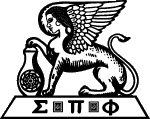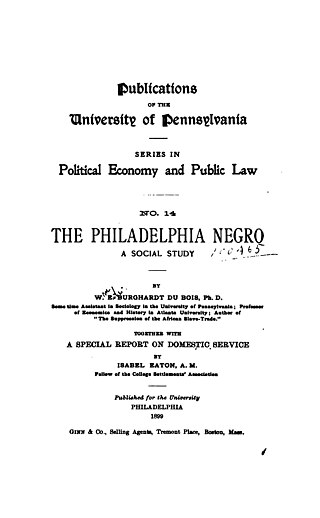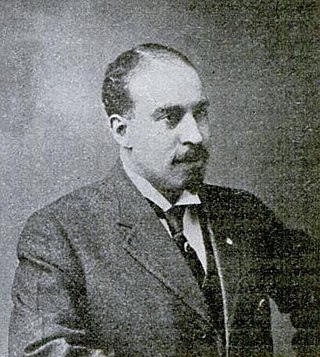
In the United States, the social hygiene movement was an attempt by Progressive era reformers in the late 19th and early 20th century to control venereal disease, regulate prostitution and vice, and disseminate sexual education through the use of scientific research methods and modern media techniques. Social hygiene as a profession grew alongside social work and other public health movements of the era. Social hygienists emphasized sexual continence and strict self-discipline as a solution to societal ills, tracing prostitution, drug use and illegitimacy to rapid urbanization. The movement remained alive throughout much of the 20th century and found its way into American schools, where it was transmitted in the form of classroom films about menstruation, sexually transmitted disease, drug abuse and acceptable sexual behavior in addition to an array of pamphlets, posters, textbooks and films.

The March Against Fear was a major 1966 demonstration in the Civil Rights Movement in the South. Activist James Meredith launched the event on June 5, 1966, intending to make a solitary walk from Memphis, Tennessee, to Jackson, Mississippi via the Mississippi Delta, starting at Memphis's Peabody Hotel and proceeding to the Mississippi state line, then continuing through, respectively, the Mississippi cities of Hernando, Grenada, Greenwood, Indianola, Belzoni, Yazoo City, and Canton before arriving at Jackson's City Hall. The total distance marched was approximately 270 miles over a period of 21 days. The goal was to counter the continuing racism in the Mississippi Delta after passage of federal civil rights legislation in the previous two years and to encourage African Americans in the state to register to vote. He invited only individual black men to join him and did not want it to be a large media event dominated by major civil rights organizations.

Hubert Henry Harrison was a West Indian-American writer, orator, educator, critic, race and class conscious political activist, and radical internationalist based in Harlem, New York. He was described by activist A. Philip Randolph as "the father of Harlem radicalism" and by the historian Joel Augustus Rogers as "the foremost Afro-American intellect of his time." John G. Jackson of American Atheists described him as "The Black Socrates".
Alvin Francis Poussaint is an American psychiatrist known for his research on the effects of racism in the black community. He is a noted author, public speaker, and television consultant, and dean of students at Harvard Medical School. His work in psychiatry is influenced greatly by the civil rights movement in the South, which he joined in 1965.

Sigma Pi Phi (ΣΠΦ), also known as The Boulé, is an African American professional fraternity. Founded in Philadelphia, Pennsylvania, in 1904, it is arguably the oldest fraternity for African Americans, between it and Alpha Phi Alpha founded at Cornell University. The fraternity does not have collegiate chapters and is designed for professionals in mid-career or older. Sigma Pi Phi has over 5,000 members and 139 chapters throughout the United States, the United Kingdom, The Bahamas, Colombia and Brazil.

Louis Tompkins Wright was an American surgeon and civil rights activist. In his position at Harlem Hospital he was the first African-American on the surgical staff of a non-segregated hospital in New York City. He was influential for his medical research as well as his efforts pushing for racial equality in medicine and involvement with the National Association for the Advancement of Colored People (NAACP), which he served as chairman for nearly two decades.

The Philadelphia Negro is a sociological and epidemiological study of African Americans in Philadelphia that was written by W. E. B. Du Bois, commissioned by the University of Pennsylvania and published in 1899 with the intent of identifying social problems present in the African American community.

Henry McKee Minton was an African-American medical doctor who was one of the founders of Sigma Pi Phi and was Superintendent of the Mercy Hospital of Philadelphia for twenty-four years.

Virginia Margaret Alexander was an American physician, public health researcher, and the founder of the Aspiranto Health Home in Philadelphia, Pennsylvania.

In the United States, black genocide is a historiographical framework and rhetorical term used to analyze the past and present impact of systemic racism on African Americans by both the United States government and white Americans. The decades of lynchings and long-term racial discrimination were first formally described as genocide by a now-defunct organization, the Civil Rights Congress, in a petition which it submitted to the United Nations in 1951. In the 1960s, Malcolm X accused the US government of engaging in human rights abuses, including genocide, against black people, citing long-term injustice, cruelty, and violence against blacks by whites.

John C. Bowers, Jr. was an African American entrepreneur, organist and vestryman at St. Thomas African Episcopal Church, and a founding member of the first Grand United Order of Odd Fellows for African Americans in Pennsylvania. He was active in the anti-slavery movement in Philadelphia, and involved in the founding of several organizations including the Pennsylvania Anti-Slavery Society. "A fervent abolitionist and outspoken opponent of colonization, [he] was much in demand as a public speaker."

Edith Irby Jones was an American physician who was the first woman president of the National Medical Association and a founding member of the Association of Black Cardiologists. She was honored by many awards, including induction into both the University of Arkansas College of Medicine Hall of Fame and the inaugural group of women inducted into the Arkansas Women's Hall of Fame. She was the first African American to be accepted as a non-segregated student at the University of Arkansas for Medical Sciences and the first black student to attend racially mixed classes in the American South. She was the first African American to graduate from a southern medical school, first black intern in the state of Arkansas, and later first black intern at Baylor College of Medicine.

Black Cross Nurses is an international organization of nurses which was founded in 1920, based upon the model of the Red Cross. The organization was the women's auxiliary of the Universal Negro Improvement Association and African Communities League and was established to provide health services and education to people of African descent.

William J. Thompkins was a physician and health administrator in Kansas City, Missouri and served as Recorder of Deeds for the District of Columbia from 1934 to his death. He first received national notice when he challenged Jim Crow Laws in Oklahoma in Federal Courts in the early 1910s. He was a successful physician and was appointed superintendent of the Old General Hospital in Kansas City, Missouri and the Assistant Commissioner of Health in that City. He wrote an influential study of the relationship between housing conditions and tuberculosis in blacks and was active in Democratic politics which garnered him attention at the highest levels of the party. He became president of the National Negro Democratic Association and was a major campaigner for the Democratic Presidential Candidates in campaigns from 1928 until 1940, gaining national level party appointments in 1932, 1936, and 1940. In 1934 he was appointed Recorder of Deeds for Washington, DC. This position was the highest federal appointment given to an African American, a tradition which was started with Frederick Douglass' appointment to the position in 1881.

The history of African Americans or Black Philadelphians in the city of Philadelphia, Pennsylvania has been documented in various sources. People of African descent are currently the largest ethnic group in Philadelphia. Estimates in 2010 by the U.S. Census Bureau documented the total number of people living in Philadelphia who identified as Black or African American at 644,287, or 42.2% of the city's total population.
Paul Bertau Cornely was an American physician, public health pioneer, and civil rights activist. In 1934, he became the first African American to earn a doctoral degree in public health. He was elected President of the American Public Health Association in 1970.

Alma Vessells John was an American nurse, newsletter writer, radio and television personality, and civil rights activist. Born in Philadelphia in 1906, she moved to New York to take nursing classes after graduating from high school. She completed her nursing training at Harlem Hospital School of Nursing in 1929 and worked for two years as a nurse before being promoted to the director of the educational and recreational programs at Harlem Hospital. After being fired for trying to unionize nurses in 1938, she became the director of the Upper Manhattan YWCA School for Practical Nurses, the first African American to serve as director of a school of nursing in the state of New York.. In 1944, John became a lecturer and consultant with the National Nursing Council for War Service, serving until the war ended, and was the last director of the National Association of Colored Graduate Nurses from 1946 until it dissolved in 1951. Her position at both organizations was to expand nursing opportunities for black women and integrate black nurses throughout the nation into the health care system.
Henry Bozeman Jones was an African American artist, writer, print-maker, illustrator, teacher, athletic coach and school counselor. He was known primarily for his portraits and landscapes.

William Clarence Hueston Sr. was an American lawyer, magistrate, and community leader. Hueston was the first African-American graduate from the University of Chicago Law School. He served as the first African-American judge in Gary, Indiana, as president of the Negro National Baseball League, and as the first African-American Assistant Solicitor in the United States Post Office Department within the Hoover administration. Hueston practiced law in private firms and was an influential activist for African-American civil rights throughout his life. An active member of fraternal organizations, Hueston served as education commissioner and grand secretary within the Improved Benevolent and Protective Order of the Elks of the World.

Lula Gertrude Warlick was an American nurse, educator, and nursing administrator, based in Philadelphia for much of her career.


















